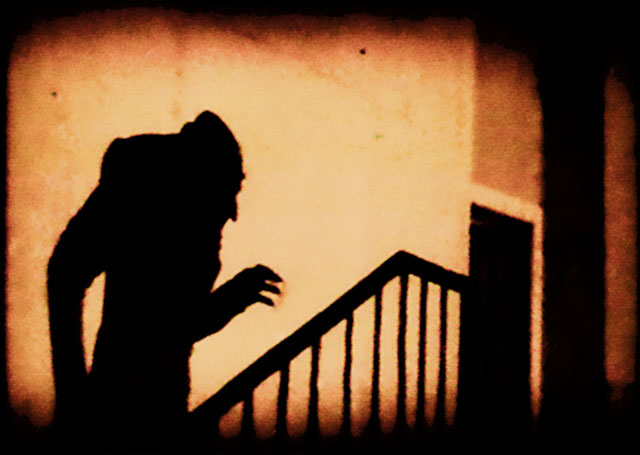Horror can be expressed in a manner of ways, such as novels, comics, stories, television shows, but we will focus on horror within movies. Horror is somewhat unique among the film genres in that there is a recognizable pattern that happens again and again.
The first horror films were usually set in spooky old mansions, castles, or fog-shrouded, dark and shadowy locales. The main characters in these early horror films included: vampires, demented madmen, devils, unfriendly ghosts, monsters, mad scientists, demons, zombies, evil spirits, Satanic villains…
In the 18th and 19th centuries, vampires began to emerge in popular fiction. It’s the time when Bram Stoker wrote the vampire novel Dracula. The novel later became the inspiration for many vampire films.
One of those films is Nosferatu: A Symphony of Horror (German: Nosferatu, Eine Symphonie des Grauens). Directed by Friedrich Wilhelm Murnau in 1922, Nosferatu was one of the first noted horror films.
The film was based on the Bram Stoker book Dracula, but the title and character names were changed because Murnau was unable to obtain the rights to the novel.
Watch this interesting video for the iconic movie and feel the frightening atmosphere that director Murnau offers in his masterpiece.
The photography in Nosferatu is highly influenced by the German Expressionist Movement and is very symbolic and stylized. This is why Nosferatu is one of the creepiest of the genre.
Nosferatu’s main characters borrowed quite explicitly and changed from Bram Stoker’s Dracula. Count Dracula became Count Orlock (Max Schreck), Jonathan Harker became Thomas Hutter (Gustav von Wangenheim), Mina Harker became Ellen Hutter (Greta Schröder), and scenes set in England were moved to Bremen, Germany.
Murnau also changed the ending of the film. In Bram Stoker’s version sunlight couldn’t harm vampires and in Nosferatu, Count Orlok is burned up by the sunlight.
Stoker’s widow brought the case with the copyrights to a German Court and in 1925 the court ordered all prints of the film to be burned. Somehow few copies of the film survived and the film was released in the United States in 1929.
Nosferatu would influence all of the later Dracula productions and it’s considered by many the greatest adaptation of Dracula.
